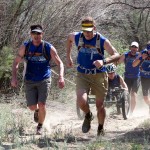 That employees are increasingly called upon to work collectively and collaboratively is hard to dispute. How teams work effectively together however is still something that is not completely understood.
That employees are increasingly called upon to work collectively and collaboratively is hard to dispute. How teams work effectively together however is still something that is not completely understood.
That’s not to say that there haven’t been numerous attempts to do so down the years, and indeed, the fabled team away day has entered into corporate lore for their infamous team building exercises.
I wrote about a study published earlier this year that looked at the makeup of the team, and in particular the number of ‘star players’ in the team. It’s easy to fall into the trap of believing that a collection of the best individuals will automatically make the best team, but the study found that was far from the case.
“Most people believe that the relationship between talent and team performance is linear – the more their team is packed with talent, the better they will do,” explains the paper. “Yet our latest research documenting a ‘too-much-talent effect’, reveals that for teams requiring high levels of interdependence, like football and basketball, talent facilitates team performance… but only up to a point. Beyond this point, the benefits of adding more top talent will decrease and eventually hurt the team performance because they fail to coordinate their actions.”
The belief is that for the team to succeed, they have to have a high degree of shared knowledge. In a sporting context for instance, they’d need to know the same tactics and strategies. This then allows them to coordinate activities effectively, thus allowing the team to perform well.
The role of circumstances
It’s a nice hypothesis, but how do things change when circumstances change? Do teams that function perfectly well under benign circumstances fall apart under challenging situations? That was the query posed by a recent paper.
The paper suggests that the real time interactions between people have a huge impact upon the performance of the team. It highlights the value of perturbation training, whereby team members are purposefully placed into strained situations to encourage them to become adaptive to the needs of the situation.
Building an adaptive team
One experiment saw participants trained to operate an unmanned aerial vehicle simulator. Members of the team were told to coordinate with one another to take reconnaissance photos of particular targets.
Each mission saw a series of unexpected events, such as enemy activity or a fault in the communication equipment. These disruptions were designed to place the team out of their comfort zone.
The teams were then asked to complete a second task. Some teams remained together, whilst others were mixed up, so that they were with people who had not gone through the perturbation training previously.
Whilst the logic would suggest that the team that was experienced with working together would perform best, it actually emerged that the mixed team did better and acted in a more adaptive way to the obstacles placed in front of them.
“The idea behind perturbation training is to ’exercise‘ team coordination by introducing brief external disturbances (i.e., perturbations) to coordinative links that force teams to organize new solutions to coordination problems,” the researcher says. “Under novel task conditions, perturbation-trained teams outperformed teams that were either trained on each other’s roles to increase shared knowledge.”
Maybe it’s worth introducing some challenging circumstances into your own training to encourage your employees to think more flexibly.
Building up the team and leading all the way is one of the most challanging tasks for me.